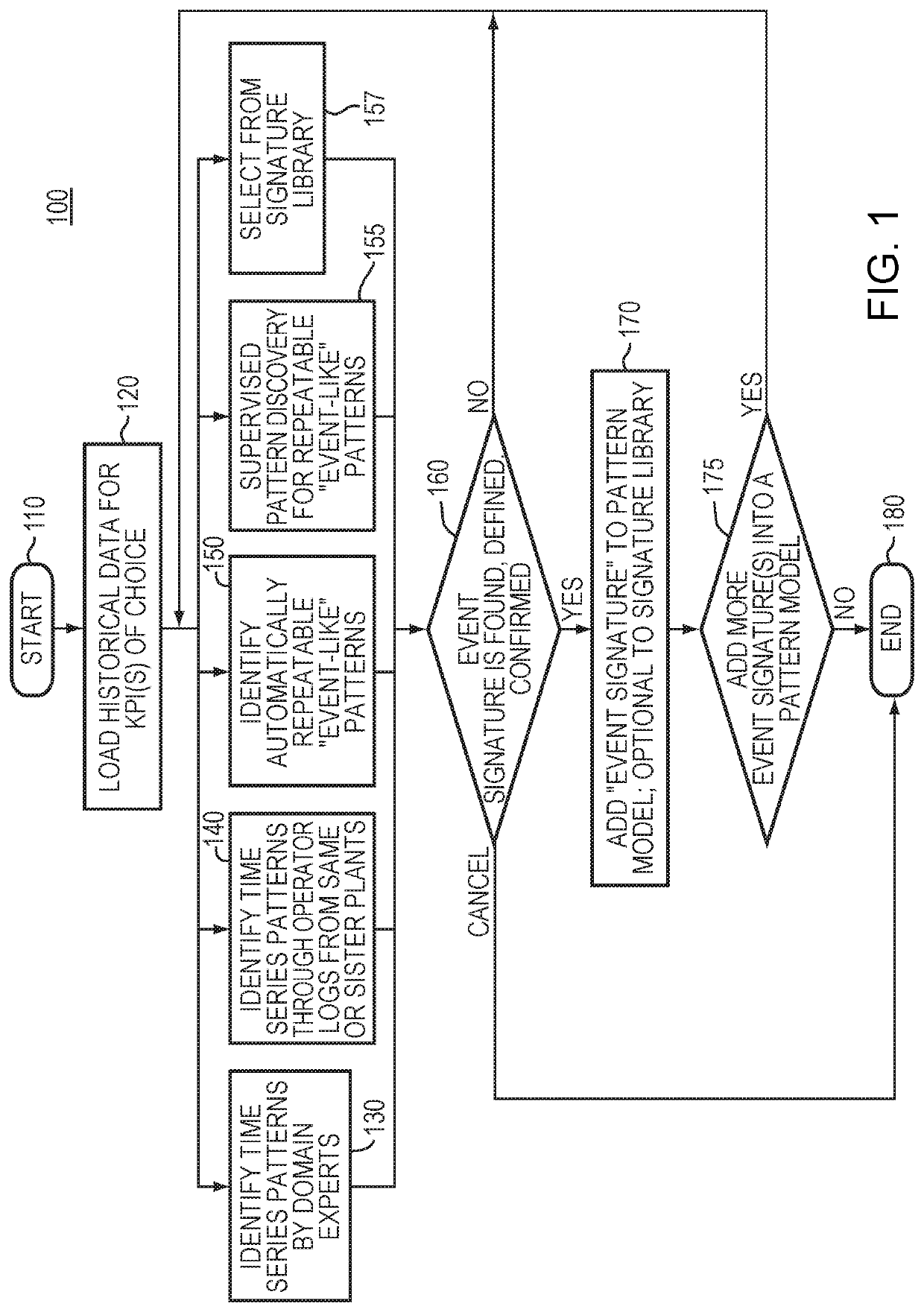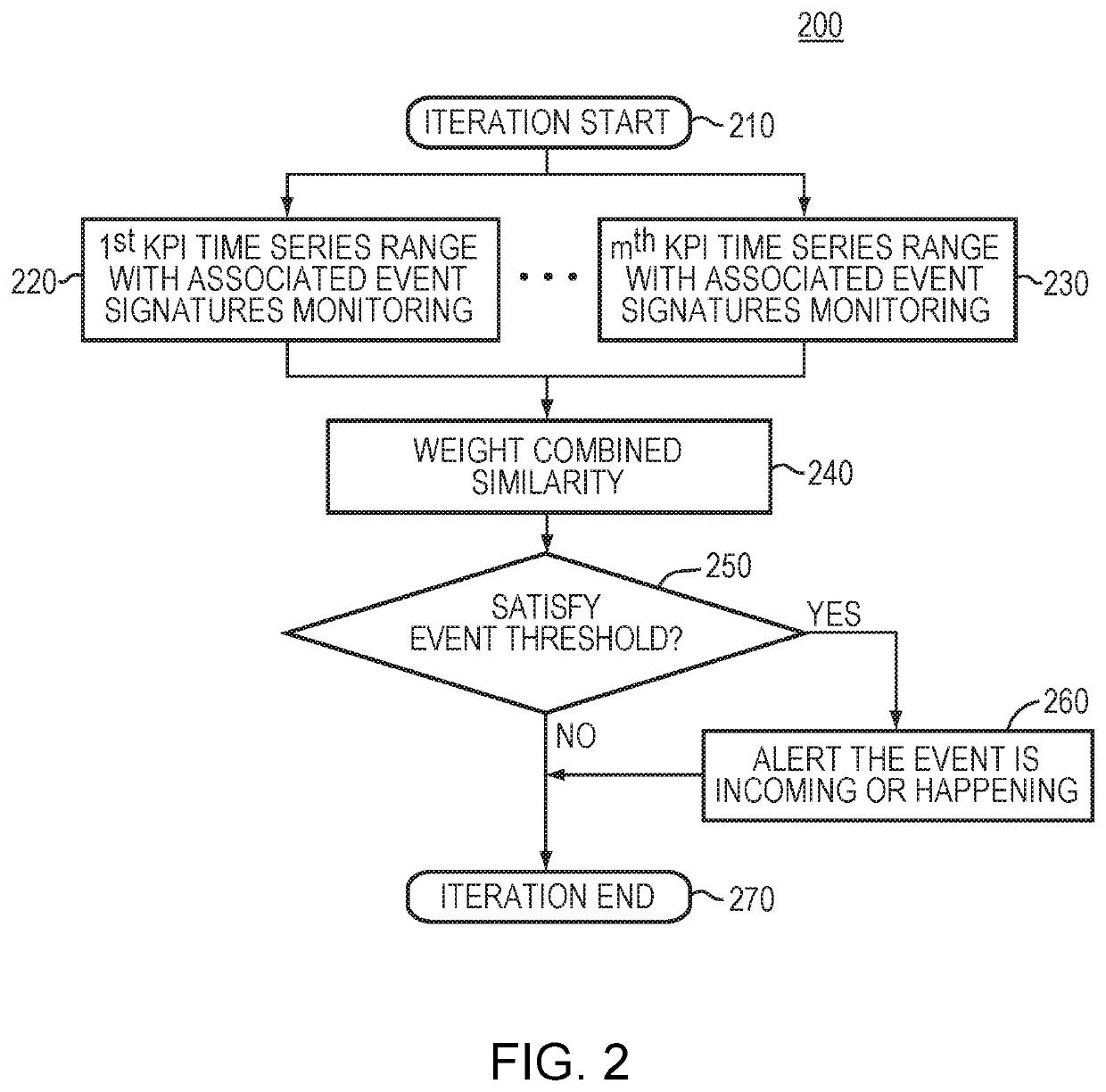Computer system and method for monitoring key performance indicators (KPIs) online using time series pattern model
a computer system and key performance indicator technology, applied in adaptive control, testing/monitoring control systems, instruments, etc., can solve the problems of unsuitability of traditional plant models, too complicated and expensive development of traditional first-principal models, and achieve the effect of maintaining process performan
- Summary
- Abstract
- Description
- Claims
- Application Information
AI Technical Summary
Benefits of technology
Problems solved by technology
Method used
Image
Examples
Embodiment Construction
[0030]A description of example embodiments of the invention follows.
Overview
[0031]Embodiments of the present invention provide a modeling approach (tools) for sustaining and maintaining performance of a plant process. Random abnormal (or otherwise undesirable) operating events, based on various root-causes, occur in an online plant process, which adversely affect the performance of the online plant process. These embodiments build and deploy a pattern model used to monitor trends in the movement (time series) of KPIs to detect a certain undesirable operating event in an online plant process. The deployed pattern models enable plant personnel (e.g., plant operators, maintenance personnel, and such) and plant operating systems to quickly locate, identify, monitor, and detect / predict the undesirable operating events (or any other plant event without limitation) and then take actions to prevent such undesirable events happing.
[0032]Previous modeling approaches are not suitable for monit...
PUM
 Login to View More
Login to View More Abstract
Description
Claims
Application Information
 Login to View More
Login to View More - R&D
- Intellectual Property
- Life Sciences
- Materials
- Tech Scout
- Unparalleled Data Quality
- Higher Quality Content
- 60% Fewer Hallucinations
Browse by: Latest US Patents, China's latest patents, Technical Efficacy Thesaurus, Application Domain, Technology Topic, Popular Technical Reports.
© 2025 PatSnap. All rights reserved.Legal|Privacy policy|Modern Slavery Act Transparency Statement|Sitemap|About US| Contact US: help@patsnap.com



